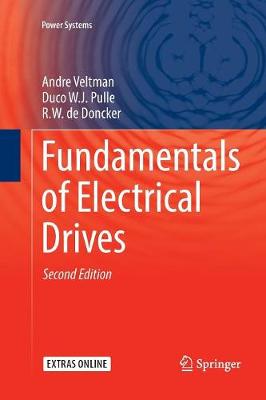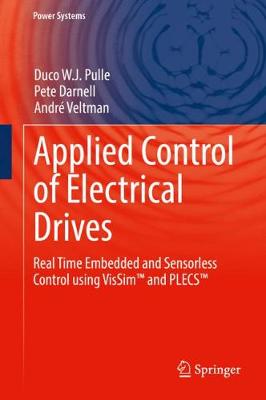Power Systems
3 total works
Fundamentals of Electrical Drives
by Andre Veltman, Duco W.J. Pulle, and R.W. de Doncker
The purpose of this book is to familiarize the reader with all aspects of electrical drives. It contains a comprehensive user-friendly introductory text.
Applied Control of Electrical Drives
by Duco W J Pulle, Pete Darnell, and Andre Veltman
* Provides an overall understanding of all aspects of AC electrical drives, from the motor and converter to the implemented control algorithm, with minimum mathematics needed
* Demonstrates how to implement and debug electrical drive systems using a set of dedicated hardware platforms, motor setup and software tools in VisSim (TM) and PLECS (TM)
* No expert programming skills required, allowing the reader to concentrate on drive development
* Enables the reader to undertake real-time control of a safe (low voltage) and low cost experimental drive
This book puts the fundamental and advanced concepts behind electric drives into practice. Avoiding involved mathematics whenever practical, this book shows the reader how to implement a range of modern day electrical drive concepts, without requiring in depth programming skills. It allows the user to build and run a series of AC drive concepts, ranging from very basic drives to sophisticated sensorless drives. Hence the book is the only modern resource available that bridges the gap between simulation and the actual experimental environment. Engineers who need to implement an electrical drive, or transition from sensored to sensorless drives, as well as students who need to understand the practical aspects of working with electrical drives, will greatly benefit from this unique reference.
Advanced Electrical Drives
by Rik W. De Doncker, Duco W.J. Pulle, and Andre Veltman
This book provides a unique approach to derive model-based torque controllers for all types of Lorentz force machines, i.e. DC, synchronous and induction machines. The rotating transformer model forms the basis for the generalized modeling approach of rotating field machines, which leads to the development of universal field-oriented control algorithms. Contrary to this, direct torque control algorithms, using observer-based methods, are developed for switched reluctance machines.
Tutorials are included at the end of each chapter, and the reader is encouraged to execute these tutorials in order to gain familiarity with the dynamic behavior of drive systems. This updated edition uses PLECS® simulation and vector processing tools that were specifically adopted for the purpose of these hands-on tutorials. Hence, Advanced Electrical Drives encourages “learning by doing” and the experienced drive specialist may find the simulation tools useful to design high-performance torque controllers.
Although it is a powerful reference in its own right, when used in conjunction with the companion texts Fundamentals of Electrical Drives and Applied Control of Electrical Drives, this book provides a uniquely comprehensive reference set that takes readers all the way from understanding the basics of how electrical drives work, to deep familiarity with advanced features and models, to a mastery of applying the concepts to actual hardware in practice.
- Teaches readers to perform insightful analysis of AC electrical machines and drives;
- Introduces new modeling methods and modern control techniques for switched reluctance drives;
- Updated to use PLECS® simulation tools for modeling electrical drives, including new and more experimental results;
- Numerous tutorials at end of each chapter to learn by doing, step-by-step;
- Includes extra material featuring “build and play” lab modules, for lectures and self-study.


